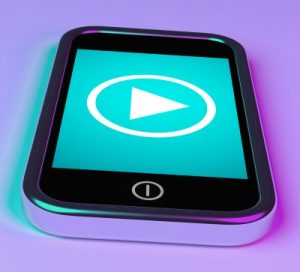You might be the kind of person that likes to shoot really provocative stats about content marketing to your superiors, and I’m just the kind of person that likes feeding them to you. I got these from Ali Tufail in The Drum. Content marketing budgets in the UK are going up about 25% a year. 74% of the public trusts content from a business that educates readers on a topic. 49% of B2B and 51% of B2C marketers had a hard time measuring content effectiveness in the previous year. 85% of clicks are given by less than 10% of the online population. The average word count for the highest ranking content in Google was 1,140 to 1,285. 91% of buyers prefer interactive content. And if you stick a product pitch in an article because you just can’t resist or your bosses demand it, that content’s credibility sinks 29%.
I often poke fun at how obsessive we’re supposed to be about what Millennials want, and nobody likes that more than Millennials. But Diana Gonimah of SocialCode says get ready for the post millennial Generation Z, born after 1996. Already $44B in spending power! A CPG company tested some content and tactics on a Gen Z audience and here’s what they learned that we might should pay attention to. 71% of them use Facebook, so never mind that Facebook’s for old people crap. Videos 15 seconds or less get watched to the end 124% more than anything longer. They respond big time to stuff that makes them laugh or that teaches them something useful. Over half of Gen Zs polled by Defy Media watch video on Facebook, but you ready for this? An nScreenMedia study shows half of them have never had cable. They watch loads of video, just not on TV.
I bet you pay attention now, because I’m going to talk about how much money you’re going to make in content in 2017. Don’t thank me, thank The Creative Group for their US survey of starting average salaries. Marketing and advertising pay should go up 3.6% next year. Interactive and design positions will go up the most, especially if you’re a front-end web developer, mobile designer, UX designer, or content strategist. So here we go, MarketingProfs reports these “top end of the range” salaries for these positions: blogger, 70,500. Content Marketing Manager, 89,750. Social Manager, 94,250. Content Strategist, 99,250. Marketing Director, 154,000. Agency Creative Director, 186,250. And if you’re bound for the C-suite, CMOs will make up to 255,000. You are now either feeling blessed or outraged.
You want your site to be the La Brea Tar Pits of the digital world, causing anyone who wanders in to stick there. That’s why publishers don’t want people having to wander off to Facebook or YouTube to watch their videos. Jonathan Shieber writes that when that happens, it costs publishers hundreds of thousands…of dollars. IRIS.TV has a toolkit called “Campaign Manager” that claims to be the first to allow in-stream placement of branded videos. The platform gives publishers control over how often a video is put in the stream, what time, on what device type, in what geography and for how long. Plus, COO Richie Hyden says, “Personalization and machine learning tools let publishers create inventories that target individual users rather than large groups.” And they say it’s not subject to ad-blockers…which really doesn’t seem to block much anymore.
I’ve talked about this before but you may not have heard me. And you may not have heard me because you weren’t listening in 360-degree audio. I’m a bit of an audiophile, one of the philes it’s legal to be. And for people like me, if the audio in a video doesn’t match the video in terms of quality, I start calling somebody I don’t even know lazy. So yay for Facebook for launching Audio 360, which will let creators add spatial audio to 360 videos on News Feed. Facebook’s Abesh Thakur and Varun Nair say it replicates over headphones how we hear sound in the real world. When you move around in a 360 video, the sound adjusts to stay in context with the video so you can hear post-apocalyptic rabbits before they jump out at you.
Google bought something. Sorry if I’m not rocking your world with unexpected news here but that’s just how Google rolls. This time they got FameBit, which they’ll use to help YouTubers hook up with brands. And Google’s Ariel Bardin is thinking that’ll in turn bring more dough to the whole online video scene. VentureBeat adds YouTube also has to stop, to the degree it can, that video scene shifting to Facebook. FameBit cofounder Agnes Kozera says they’re going to keep you smaller brands in mind, keeping YouTuber endorsements affordable. And Google thinks this is also going to help networks and agencies connect to just the right influencers.
Some of you might take your cues for what content you should make from Facebook’s Trending topics. But should you? The Washington Post’s The Intersect logged trending news stories on 4 accounts for about a month. Caitlin Dewey writes that 5 stories were totally fake, and 3 were profoundly inaccurate. There was a debunked story about a praying guy getting kicked off Clemson’s campus, coverage of iPhone features from a satire site, a news release from a discredited medical organization, a story saying 9/11 had “controlled demolitions,” and a story about the Bills from the satiric SportsPickle. DJ Gallo of said pickle said, “We’ve seen much of what’s posted on Facebook is not accurate.” An anonymous former member of the Trending team said, “I’m not surprised. It was beyond predictable by anyone who spent time with the functionality of the product.” About 40% of American adults turn to Facebook for their news.
That’s it. Follows excite me more than they should @mikestiles.



 A funny thing happened on the way to marketing’s obsession with branded video. At the same time (probably prior), a battle also started raging to capture ears with audio-only entertainment and information. And it’s a good thing each one of us has two of them, because the options for audio content are exploding.
A funny thing happened on the way to marketing’s obsession with branded video. At the same time (probably prior), a battle also started raging to capture ears with audio-only entertainment and information. And it’s a good thing each one of us has two of them, because the options for audio content are exploding.